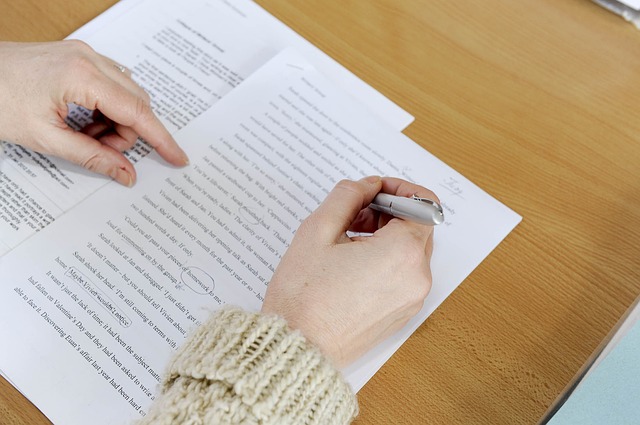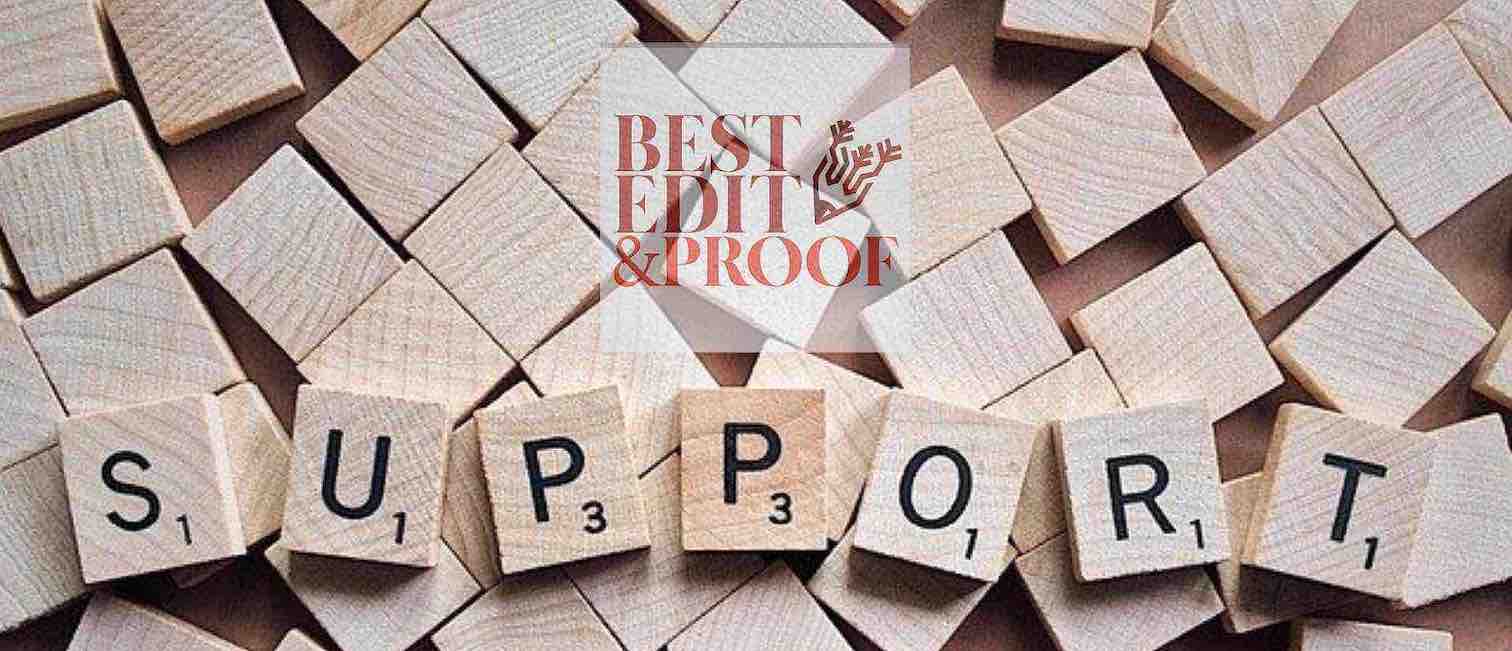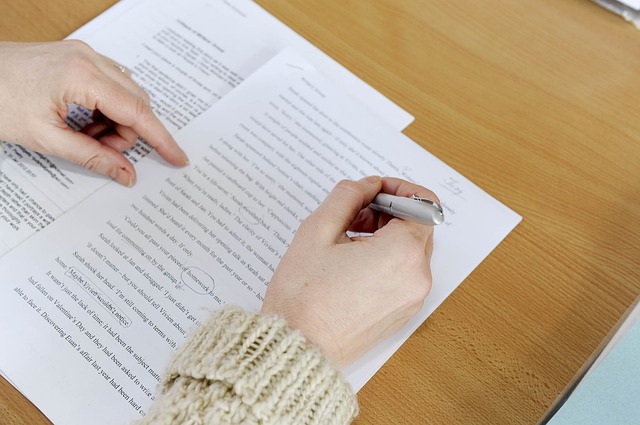Proofreading is an essential aspect of writing. You do not have excellent content if it is filled with mistakes or typos. When writing is complete, you do not push it out without reading through it. You may mess up your reputation if you submit poorly written work. Whether you want to edit, publish, submit, or proofread an article, you can use professional support to make it excellent. However, some students or writers often get confused about proofreading their works. We have made it easier for you to learn how to get an excellent article after proofreading.

Guest Post by Lori Wade
Proofreading is an essential aspect of writing. You do not have excellent content if it is filled with mistakes or typos. When writing is complete, you do not push it out without reading through it. You may mess up your reputation if you submit poorly written work. To compare the quality of your work, you can use some online tools. Whether you want to edit, publish, submit, or proofread an article, you can use professional support to make it excellent. However, some students or writers often get confused about proofreading their works. We have made it easier for you to learn how to get an excellent article after proofreading.
First, we have to take you through the meaning of proofreading. This process is performed when you have completed your article or text. Proofreading is similar to editing your work. With this editing, you can handle grammatical errors, typing, punctuation, and structure errors. When you complete this writing process, you receive an excellent article for your professional use.
If you want to proofread your academic work, you should consider the depth of your research. Some of the academic works you can proofread are research papers, articles, papers, or texts. If you give your academic work to professional proofreading services, you are assured of error-free work. Most importantly, you have the opportunity to publish your academic work in reputable journals.
The proofreading process has a step-by-step procedure to ensure you have excellent content. Here is what you can consider before you start proofreading:
You can decide to proofread your work or send it to a professional; there are things you should do. First, you should prepare for this aspect of your writing when you take a break. Yes! It will help if you take a break after writing your project. The break will help you unwind and take a better approach to your writing. Even professionals have to stop and do other things before working on people's projects. Thoughts are reset when you take a break from your writing. You find what you might have missed while writing your content when you step back.
If there is an unwritten rule of proofreading, it is taking your time to manage your editing. Since proofreading is the last part of your work, it has to come out perfect. Hence, you have to concentrate on the work. You can take the work in batches. For instance, you can decide to divide your work into batches or segments. When you do this segmentation, you can work on each segment differently until you finish the work.
A trick you can use during proofreading includes:
To read your content aloud
Change the font of your article
Use your fingers in pointing to the words
These tricks can help you proofread the article seamlessly.
People who proofread academic work should consider these facts. Therefore, you should ensure that your claims are relevant and accurate when you write. This means that you have to keep a section of your proofreading for information or fact-checking. When you check out the information or facts used in your article, it becomes easier to produce relevant content.
One of the reasons people use proofreading sites like besteditproof.com is that they help you avoid some errors. If there is something that can be unforgiven as a professional writer is grammatical errors. Serious readers often ignore articles or papers with punctuation errors.
Proofreading is not complete if you don’t handle such errors. This means that you have to check the article multiple times for such errors. Then, you edit and take a break, then come back to it for more corrections.
We have highlighted the importance of taking breaks during proofreading. Since you are looking for sentences or phrases with errors, these breaks will help you see them easily.
Different writings come with their formats. You must not use the wrong format for your article. On the other hand, you have to know the right format for your work. Hence, one of the things to consider when proofreading is the format. People who write academic papers have to obey the format given by the bodies or individuals. Therefore, writers have to be cautious when writing their projects.
You should create a list that would help you proofread your work. Also, if it is a professional proofreader, the person follows the same rules you follow.
After proofreading, you have to reread the work until everything is perfected. This means that you may have to give your article to a second person to read. This is one of the ways to avoid common proofreading and editing mistakes.
Best Edit & Proof expert editors and proofreaders focus on offering manuscripts with proper tone, content, and style of academic writing, and also provide an upscale editing and proofreading service for you. If you consider our pieces of advice, you will witness a notable increase in the chance for your research manuscript to be accepted by the publishers. We work together as an academic writing style guide by bestowing subject-area editing and proofreading around several categorized writing styles. With the group of our expert editors, you will always find us all set to help you identify the tone and style that your manuscript needs to get a nod from the publishers.
You can also avail of our assistance if you are looking for editors who can format your manuscript, or just check on the particular styles for the formatting task as per the guidelines provided to you, e.g., APA, MLA, or Chicago/Turabian styles. Best Edit & Proof editors and proofreaders provide all sorts of academic writing help, including editing and proofreading services, using our user-friendly website, and a streamlined ordering process.
Visit our order page if you want our subject-area editors or language experts to work on your manuscript to improve its tone and style and give it a perfect academic tone and style through proper editing and proofreading. The process of submitting a paper is very easy and quick. Click here to find out how it works.
Our pricing is based on the type of service you avail of here, be it editing or proofreading. We charge on the basis of the word count of your manuscript that you submit for editing and proofreading and the turnaround time it takes to get it done. If you want to get an instant price quote for your project, copy and paste your document or enter your word count into our pricing calculator.
Contact us to get support with academic editing and proofreading. We have a 24/7 active live chat mode to offer you direct support along with qualified editors to refine and furbish your manuscript.

Follow us on Twitter, LinkedIn, Facebook, Instagram, and Medium.
For more posts, click here.
Guest Post by Lori Wade
Author’s BIO: Lori Wade is a journalist and content writer from Louisville. Lori creates news and informative articles on copywriting, freelance, and creative writing. You can find her on LinkedIn.

While writing a paper, generally, we focus on the facts that make up the actual content. While we focus on writing the right words, we may neglect some grammatical mistakes and other writing mistakes. Hiring a professional proofreading and editing service doesn't only eliminate frustration; there are other benefits as well. This article discusses why you need professional proofreading and editing services.
Continue Reading
Editing and proofreading your manuscript is an important step before submitting it to peer-review journals. In this guide, we will go through the step-by-step process of editing and proofreading before your manuscript gets submission-ready.
Continue Reading
For academic achievement, staying ahead of the pack is always a crucial issue. Taking advantage of professional academic editing and proofreading can help you reach your potential and increase chances of your work being published in professional journals. It requires a broad-ranging comprehension to fix a document exceptionally. Therefore, academic editing and proofreading are a critical part of the writing process.
Continue Reading
For all people in the academic or literary industry, it is a well-known fact that no content is deemed complete without editing and proofreading. It is that much of an important part of the writing process and cannot be overlooked. Therefore, hiring professionals is a wise idea. However, if you are new to this, availing yourself of the right editing and proofreading services can be quite confusing. Here, we will discuss all the things you need to be careful about while availing of professional editing and proofreading services.
Continue Reading
After writing your manuscript, you may likely decide on an editor to perform the final checks on your document. Mostly, authors make the mistake of sending their manuscripts to their editors, without providing adequate information about specifications on the service they seek. With such limited information, your editor may produce an unsatisfactory job with limited information at his/her disposal. Thus, to ensure that your editors provide the best possible service, which will prevent journals from rejecting your manuscripts on the grounds of noncompliance to journal requirements, the following information should be provided beforehand.
Continue Reading